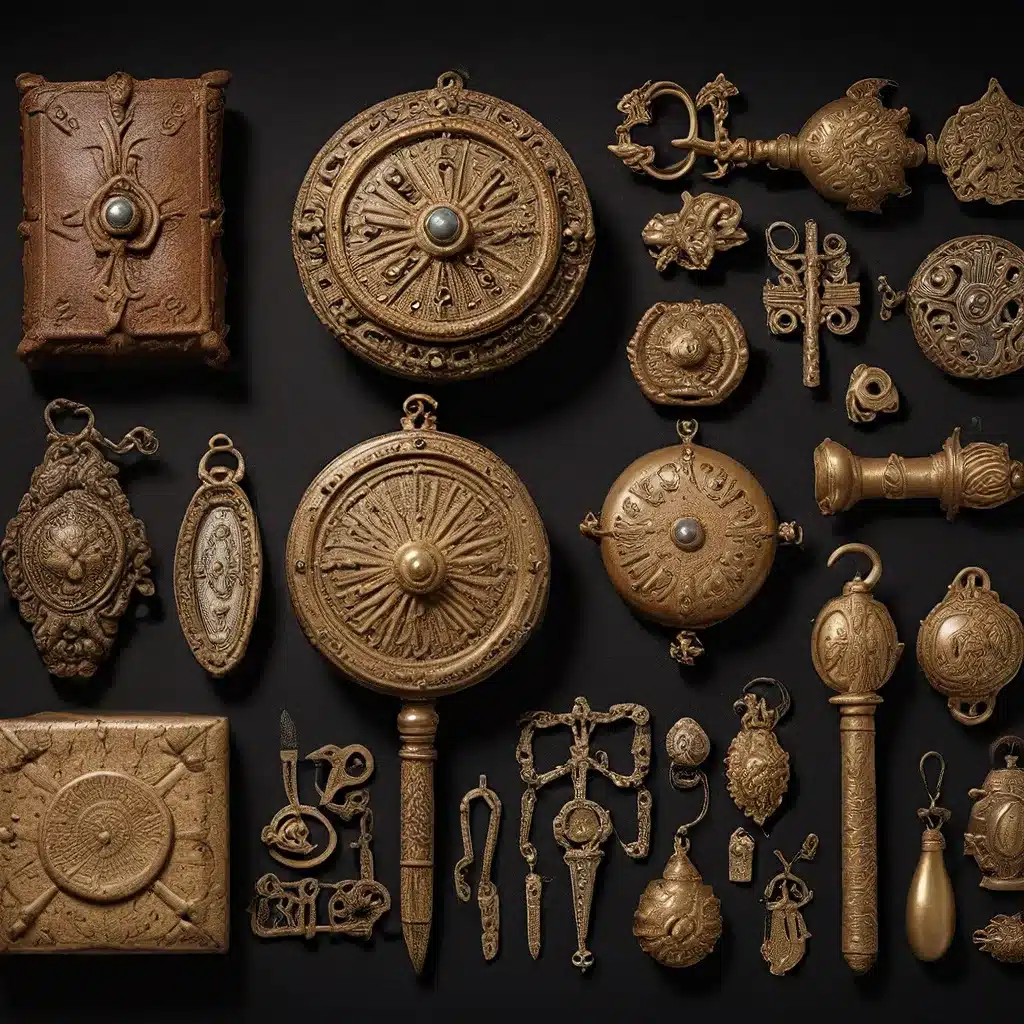
Uncovering the Past: A Journey Through Ancient Civilizations
Art has long been recognized as a powerful time machine, offering us a glimpse into the hearts, minds, and souls of the people, cultures, and civilizations that came before us. Whether it be the prehistoric cave paintings of our ancestors, the grandiose monuments of ancient Egypt, or the breathtaking masterpieces of the Renaissance, each work of art serves as a portal to the past, transporting us to a different era and allowing us to experience the world through the eyes of those who lived it.
One of the most fascinating aspects of art is its ability to reflect the cultural, political, and religious influences of the time in which it was created. From the intricate hieroglyphics adorning the walls of Egyptian temples to the symbolic iconography found in medieval cathedrals, art has long been used as a means of communication, a way for people to express their beliefs, aspirations, and struggles.
Ancient Egyptian art, for example, was heavily influenced by the country’s religious beliefs and the power structures of its ruling dynasties. The monumental statues and reliefs that adorned the temples and tombs of the pharaohs were not merely decorative; they were imbued with deep spiritual significance, serving as a visual representation of the divine right of the king and the close relationship between the mortal and the divine.
Similarly, the Gothic cathedrals of medieval Europe were more than just architectural marvels; they were veritable works of art, their stained glass windows and intricate carvings designed to inspire awe and reverence in the faithful, drawing them closer to the sacred and the divine.
Unlocking the Secrets of Priceless Artifacts
But art is not just a reflection of the past; it is also a powerful tool for unlocking the mysteries of ancient civilizations. Through the careful study and analysis of archaeological artifacts, scholars and researchers have been able to piece together a more comprehensive understanding of the lives, beliefs, and cultural practices of long-extinct societies.
Take, for example, the Rosetta Stone, a key archaeological discovery that has revolutionized our understanding of ancient Egyptian civilization. This inscribed stone, discovered in 1799, provided the crucial link between the hieroglyphic, demotic, and Greek scripts, allowing scholars to decipher the long-lost language of the Egyptians and gain unprecedented access to their written records and cultural heritage.
Similarly, the Terracotta Army of China’s first emperor, Qin Shi Huang, has shed new light on the military and political organization of the Qin Dynasty, offering a vivid and tangible representation of the power and ambition of one of the most influential figures in ancient Chinese history.
Artifacts like the Rosetta Stone and the Terracotta Army are not merely historical curiosities; they are priceless windows into the past, allowing us to better understand the priorities, values, and technological advancements of the civilizations that created them.
Emerging Theories and Groundbreaking Discoveries
As our understanding of ancient civilizations continues to grow, researchers and archaeologists are constantly making new and exciting discoveries that challenge our existing assumptions and open up new avenues of inquiry. From the recent excavation of a lost city in the Cambodian jungle to the ongoing study of the Antikythera mechanism, a remarkable ancient Greek device that may have been an early form of mechanical computer, the field of archaeology is constantly expanding our horizons and rewriting the narratives of the past.
One of the most intriguing areas of archaeological research in recent years has been the study of ancient engineering and technology. Researchers have been fascinated by the sheer scale and complexity of many ancient structures, from the pyramids of Giza to the aqueducts of Rome, and have sought to uncover the sophisticated engineering principles and construction techniques that allowed these marvels to be built.
The Antikythera mechanism, for example, has been the subject of intense study and speculation, with scholars attempting to piece together the function and purpose of this enigmatic device, which appears to have been a complex astronomical calculator capable of predicting the movements of the sun, moon, and planets.
Similarly, the engineering feats of the ancient Egyptians, such as the construction of the pyramids, have long been a source of fascination and debate. While the exact methods used to build these monumental structures are still not fully understood, ongoing research and analysis of archaeological evidence continue to shed new light on the ingenuity and technical prowess of the ancient Egyptians.
Exploring the Mysteries of the Past
As we continue to delve deeper into the past, uncovering new artifacts and unraveling the mysteries of ancient civilizations, it becomes increasingly clear that art and archaeology are inextricably linked. Each work of art, each archaeological find, serves as a window into the lives, beliefs, and aspirations of those who came before us, offering us a glimpse into a world that is both familiar and foreign, both ancient and yet strikingly relevant to our own experiences.
Whether we are studying the intricate carvings of a Mayan temple or the vibrant frescoes of a Pompeian villa, we are engaging in a process of discovery and exploration that is both intellectually and emotionally rewarding. By unlocking the secrets of these priceless artifacts, we are not only expanding our knowledge of the past but also deepening our understanding of the human experience, across time and space.
The Lost Kingdoms is dedicated to fostering this spirit of exploration and discovery, providing a platform for scholars, enthusiasts, and curious minds to delve into the rich tapestry of human history. Through the study of ancient art, archaeology, and the ongoing pursuit of knowledge, we can continue to unravel the mysteries of the past and gain a deeper appreciation for the resilience, ingenuity, and cultural diversity of our shared human heritage.


